The Green Energy Transition Has a Chilean Copper Problem
This article from Bloomberg may be of interest to subscribers. Here is a section:
Codelco’s production is down by about a fifth from only six years ago. After a double-digit-percentage drop in 2022, it’s expected to fall as much as 7% this year, to 1.35 million metric tons.
Ore quality is deteriorating around the world as existing deposits are depleted and new ones are more difficult and costly to develop. “There’s no easy mining left—not in Chile nor the rest of the world,” said Sougarret at a shareholders meeting on May 2.
Because Codelco is the world’s biggest copper supplier, its production wobbles have greater impact on a market where warehouse inventories are near their lowest levels in 18 years. The company’s travails also have tremendous impact on Chile’s economy: Copper accounts for more than half of the country’s exports and a significant share of the government’s income. President Gabriel Boric’s administration is budgeting a 40% drop in tax revenue from Codelco in 2023 at a time when it’s trying to boost social spending.
When the world is having difficulty sustaining production of a key commodity, it is reasonable to expect prices to rise. That’s generally the best way to attract the risk capital required to bring new supply online. It will not have escaped the notice of traders that copper prices are falling. That suggests one should be more concerned with demand than supply.
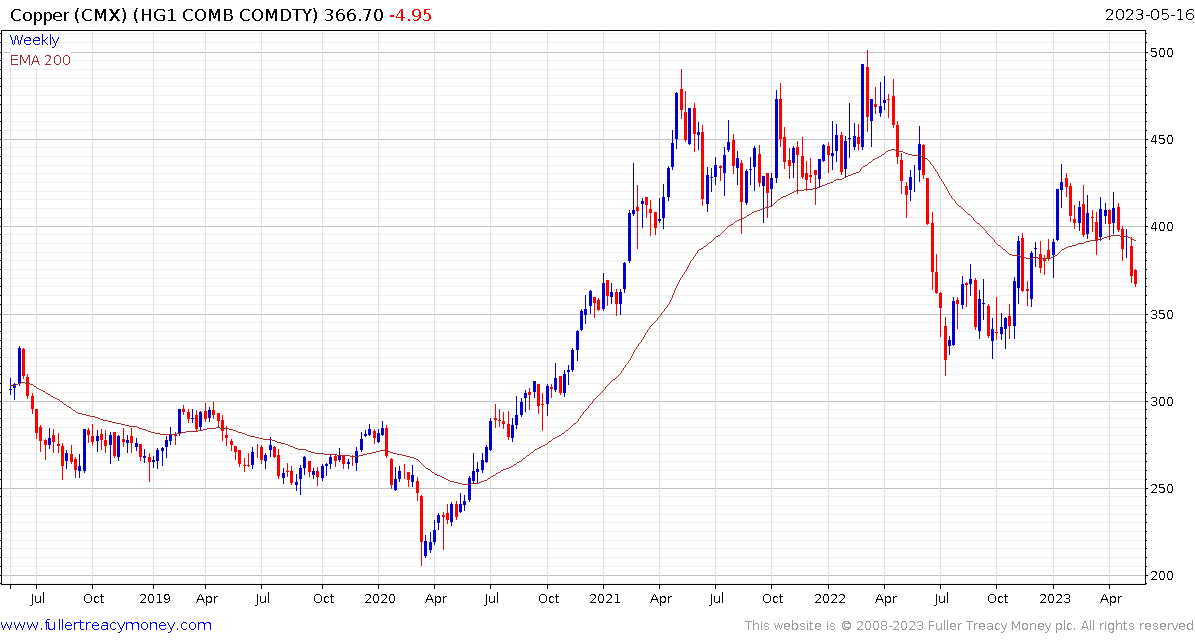 It’s not only copper. Zinc, nickel, lead and aluminium prices are also weakening. That means Chinese growth is where the focus of attention should be. The point I have been making in the daily videos for several months is demand growth is more predictable than supply most of the time. The times when demand is uncertain are when price volatility picks up in a big way.
It’s not only copper. Zinc, nickel, lead and aluminium prices are also weakening. That means Chinese growth is where the focus of attention should be. The point I have been making in the daily videos for several months is demand growth is more predictable than supply most of the time. The times when demand is uncertain are when price volatility picks up in a big way.
Chile accounts for about half of global copper supply but China is more than half of the demand side of the ledge. Nothing has happened to suggest the Chinese administration has any intention of reflating the property bubble. The focus of attention is on building next generation technology like AI and manufacturing capacity like batteries, planes and semi-conductor fabs. That’s a partial substitute for copper demand not a supplement. Perhaps the above headline should be the green new deal got a boost from China.
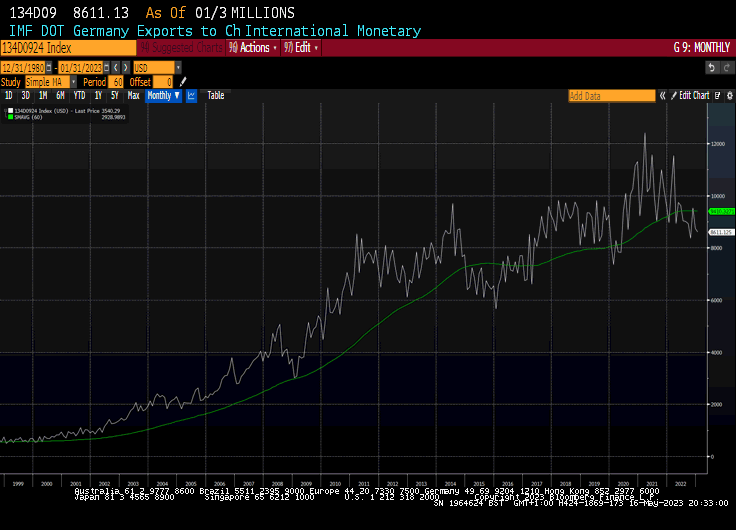
Another sign of waning Chinese demand is Germany’s economy is slowing down. Exports to China peaked at over $12 billion a month in 2021 and had shrunk to $8.6 billion by the last update in January. That’s around the peak from back in 2011 and recent manufacturing data suggest the trend remains lower.
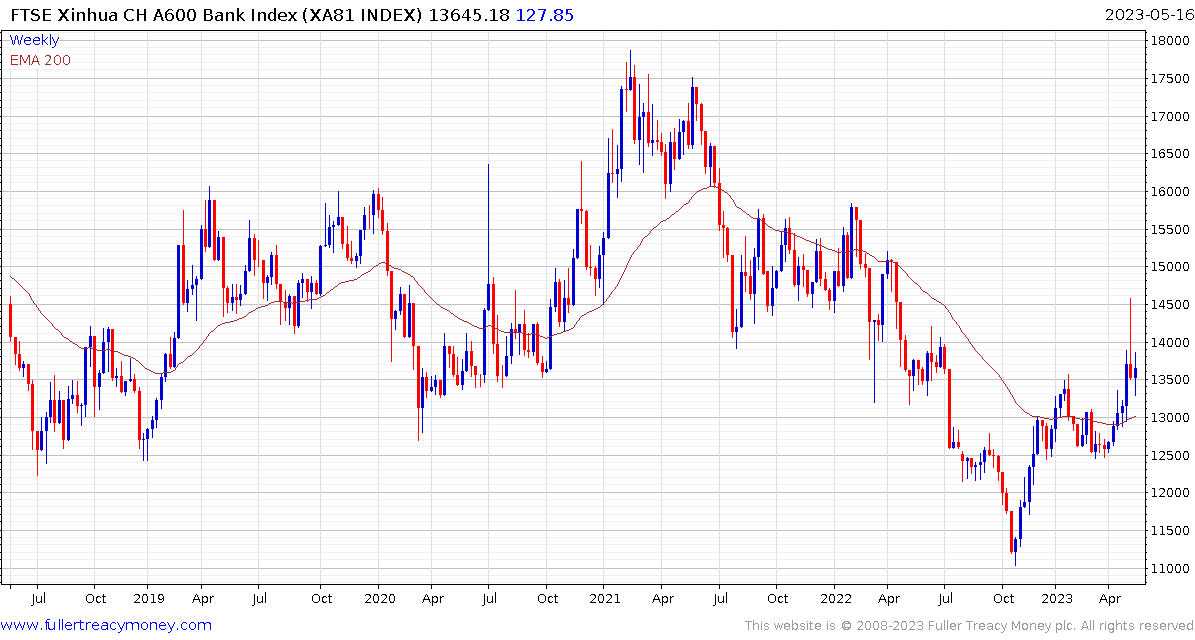 The A600 Banks Index rebounded impressively yesterday but has not yet followed through on the upside. The initial surge last week was on the expectation the state-owned portion of the market will be given preference in upcoming stimulus measures. The market now appears to be in a show me mood.
The A600 Banks Index rebounded impressively yesterday but has not yet followed through on the upside. The initial surge last week was on the expectation the state-owned portion of the market will be given preference in upcoming stimulus measures. The market now appears to be in a show me mood.
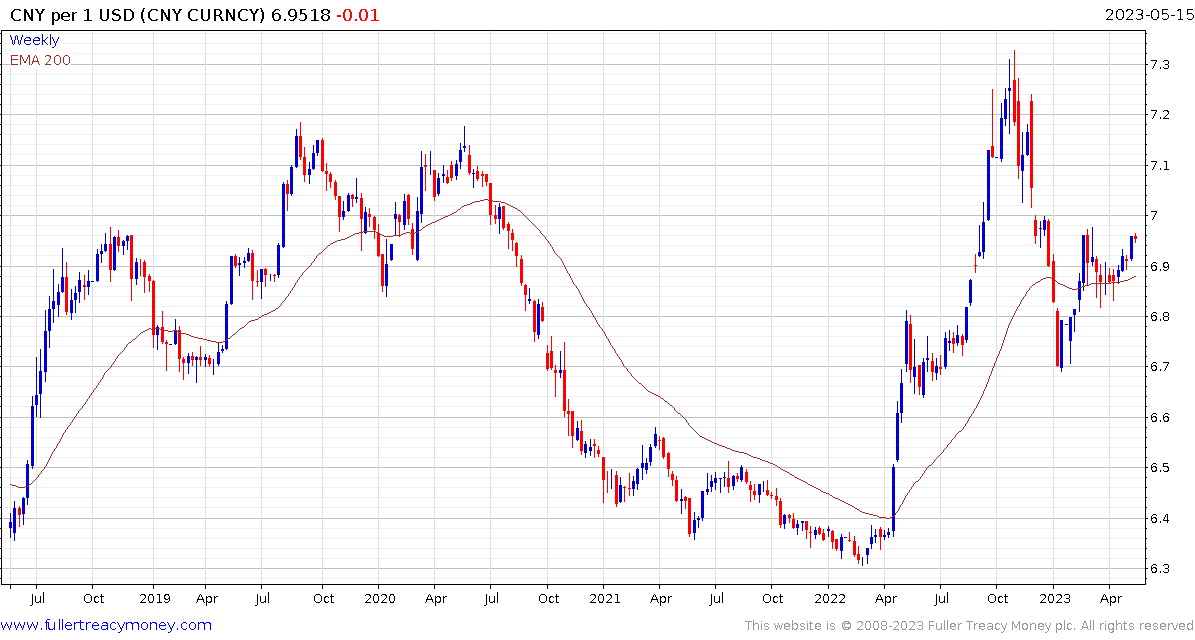 The weakening Renminbi and contracting government bond yields don’t suggest a robust Chinese economic recovery.
The weakening Renminbi and contracting government bond yields don’t suggest a robust Chinese economic recovery.
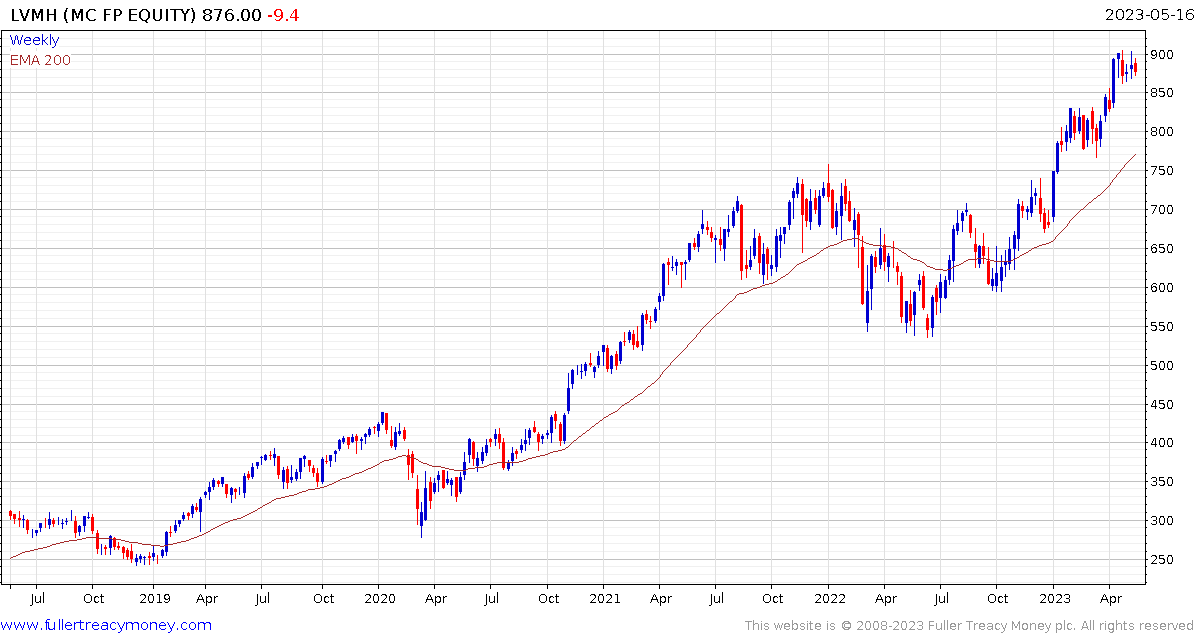 The top end of the luxury goods sector surged to new all-time highs on the expectation Chinese consumer demand would surge like it did in North America following the end of lockdowns. That does not appear to be a sustainable trend without clear stimulus.
The top end of the luxury goods sector surged to new all-time highs on the expectation Chinese consumer demand would surge like it did in North America following the end of lockdowns. That does not appear to be a sustainable trend without clear stimulus.


